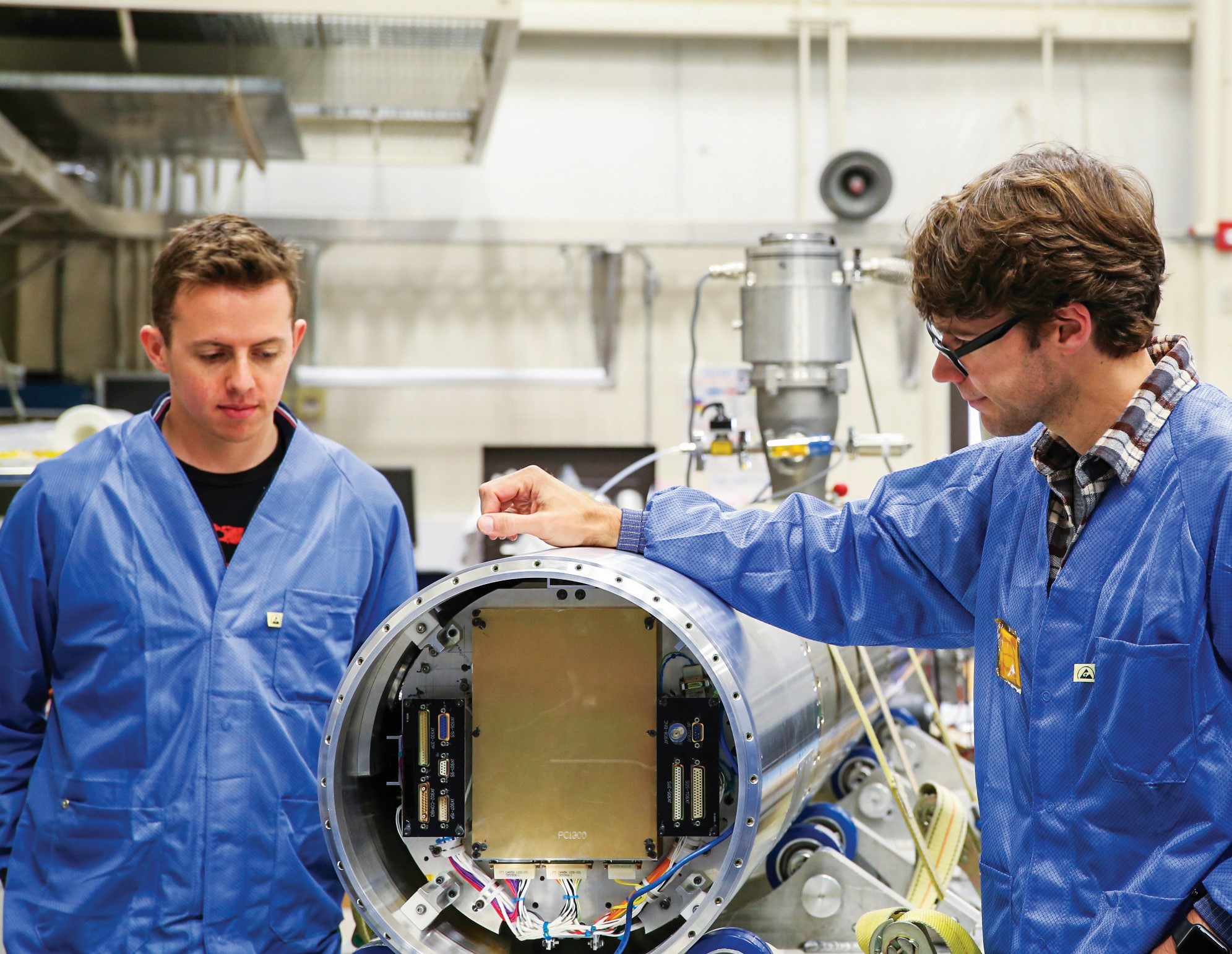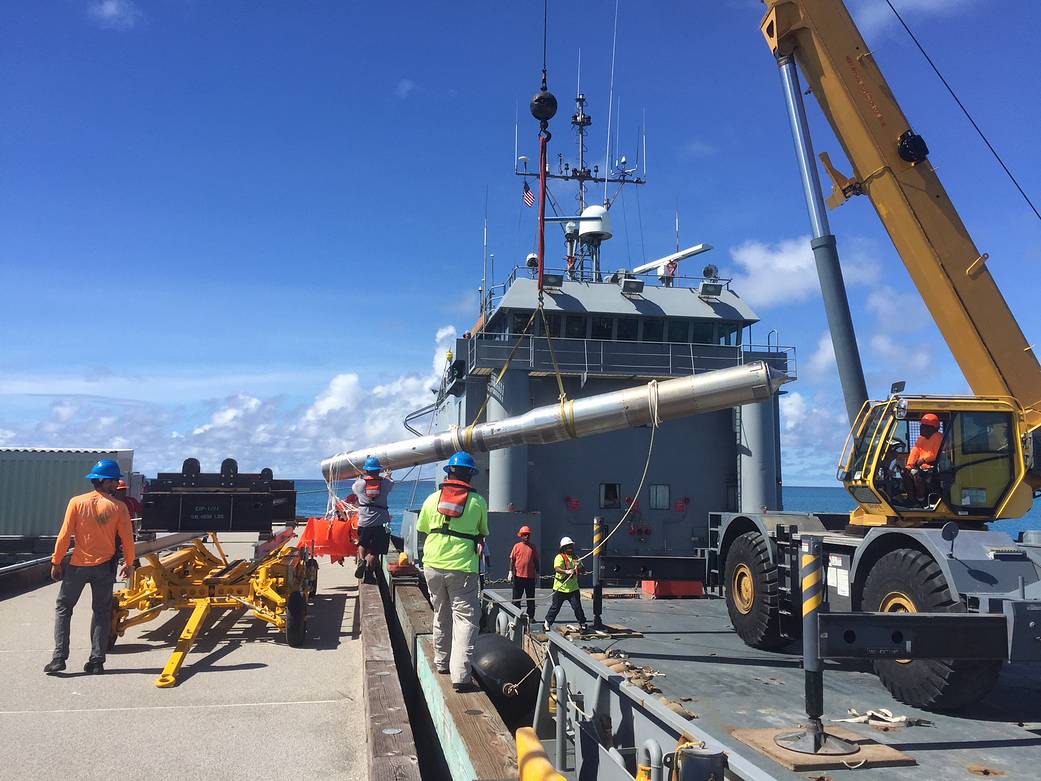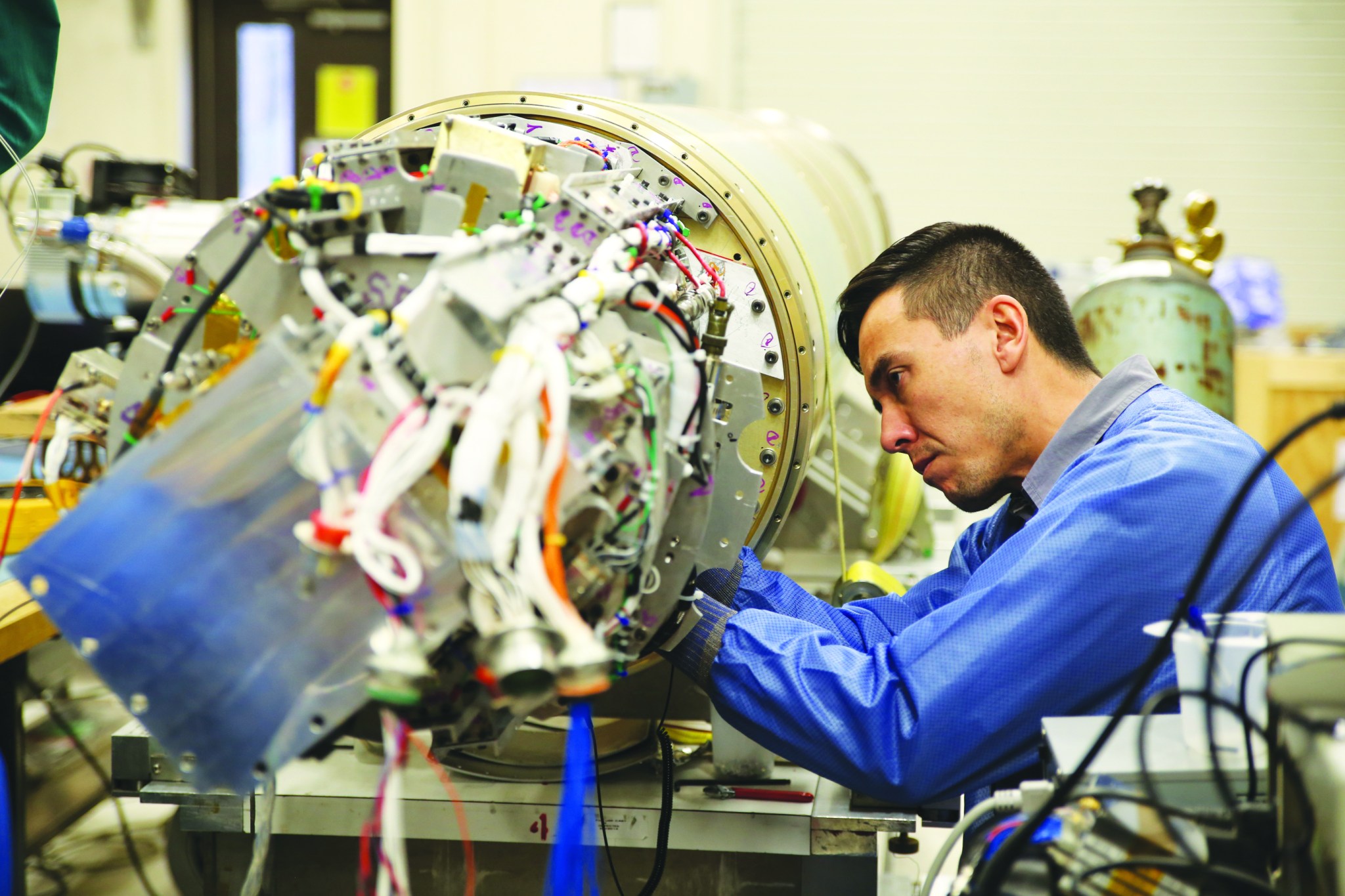UPDATE 4 p.m., April 16: The Colorado High-resolution Echelle Stellar Spectrograph, or CHESS 4, sounding rocket was successfully launched at 12:47 p.m. EDT, April 16 (4:47 a.m. local, April 17) from the Kwajalein Atoll in The Republic of the Marshall Islands. The payload systems reported a nominal flight and payload recovery is in progress. Hampered by high winds since the targeted launch day of April 13, the CHESS 4 was launched with only 13 minutes left on the last day of the launch window.
NASA will launch two astronomy experiments to study how stars are born and how they die in the Milky Way galaxy this April from Kwajalein Atoll in the Republic of the Marshall Islands.
The Water Recovery X-ray rocket, or WRX, is scheduled for launch April 4, 2018, and the Colorado High-resolution Echelle Stellar Spectrograph, or CHESS 4, on April 13. Both experiments will fly on NASA Black Brant IX sounding rockets.
The WRX mission targets the Vela supernova remnant and measures soft X-rays emanating from this region. The Vela supernova remnant was created when a star, greater than 10 times the mass of the Sun, collapsed and then exploded as a supernova, the final stage of massive stellar evolution.
Supernova explosions are one of the most energetic events in the universe, and play a role in recycling material within galaxies. They are responsible for the creation and distribution of elements — such as, oxygen, silicon, neon, iron, nickel, and magnesium among others — into the interstellar medium, thereby providing source material for the next generation of stars, planets and even organic chemistry.
The explosions are rarely seen in action in our galaxy, but evidence is left behind as a supernova remnant. Ejected material from the explosion travels at high speeds and the shockwave sweeps up interstellar material along the way, continuing to heat it to temperatures as high as 10 million Kelvin. These hot temperatures lead to emission of high energy electromagnetic radiation, such as X-rays, from the remnant.
“Supernova remnants in our galaxy are good to study due to their proximity, which makes them large, bright targets on the sky,” said Randy McEntaffer, principal investigator of WRX at Penn State University, in University Park. “The WRX payload will investigate about 10 square degrees of emission located in the north central section of Vela with its diffuse X-ray spectrograph. This will provide a modest resolving power spectrum of this region that has yet to be spectroscopically explored.”
WRX measurements will allow scientists to derive information about the conditions in the Vela supernova remnant such as the temperature, density, chemical composition, and ionization state. Using these characteristics, they will also be able to estimate the shock velocity near the remnant’s limb, the age and type of the remnant, and the energy of the supernova.
WRX will be the first sounding rocket mission from Roi-Namur, Kwajalein Atoll, to use a newly developed NASA water recovery system for astronomical payloads. Most NASA astronomical suborbital rocket missions are conducted from the White Sands Missile Range in New Mexico which allows for land recovery of the highly valued payload. Both WRX and CHESS instruments have previously been flown from White Sands.
“As astronomers, the sky that we look at is dependent on the latitude of observation. As we go toward southern latitudes we open up the southern sky. At White Sands, Vela is at too low of an altitude for efficient observation. Being able to launch from Kwajalein with water recovery increases the number of our observation targets,” said McEntaffer.
“The development of this water recovery system is important as it opens up future launch opportunities from remote southern sites to observe unique phenomena or astronomical objects inaccessible from northern launch ranges,” said Kevin France, principal investigator for CHESS-4 at the Laboratory for Atmospheric and Space Physics at the University of Colorado, Boulder.
The CHESS-4 mission will study the interstellar medium, the matter between stars. The mission focuses on translucent clouds of gas, that provide the fundamental building blocks for stars and planets. These clouds have very low densities and the only way to study them is to measure how a cloud is affected by a star — and its associated outpouring of stellar material, the stellar wind — moving through it.
CHESS will point at the star Gamma Ara, in the constellation Ara. Gamma Ara displays an unusually powerful stellar wind.
“Gamma Ara possesses an unusually strong equatorial stellar wind that is injecting large amounts of material and kinetic energy into its immediate galactic environment,” said France. “What is unique about CHESS-4, relative to its previous flights, is that we are interested in studying the molecular properties in the interaction between the wind and the local environment.”
CHESS-4 will study the interaction of this stellar wind with the surrounding interstellar medium to study the excitation of atoms and molecules in the interface region. This allows the CHESS team to study the catalysts of galactic chemistry and the raw materials for future generations of stars and planets. The team will also quantify the temperature and motions of the clouds along the line of sight.
This iteration of CHESS also features an updated instrument – a re-tuned spectrograph – which provides approximately four to five times higher spectral resolution than previous incarnations. The higher resolution is ideal for observing the excited molecules against the background signal generated by the interstellar medium.
NASA’s Sounding Rocket Program is conducted at the agency’s Wallops Flight Facility, on Virginia’s Eastern Shore. Wallops is managed by NASA’s Goddard Space Flight Center in Greenbelt, Maryland. Orbital ATK provides mission planning, engineering services and field operations through the NASA Sounding Rocket Operations Contract. NASA’s Heliophysics Division manages the sounding rocket program for the agency.
Keith Koehler
NASA’s Wallops Flight Facility


































